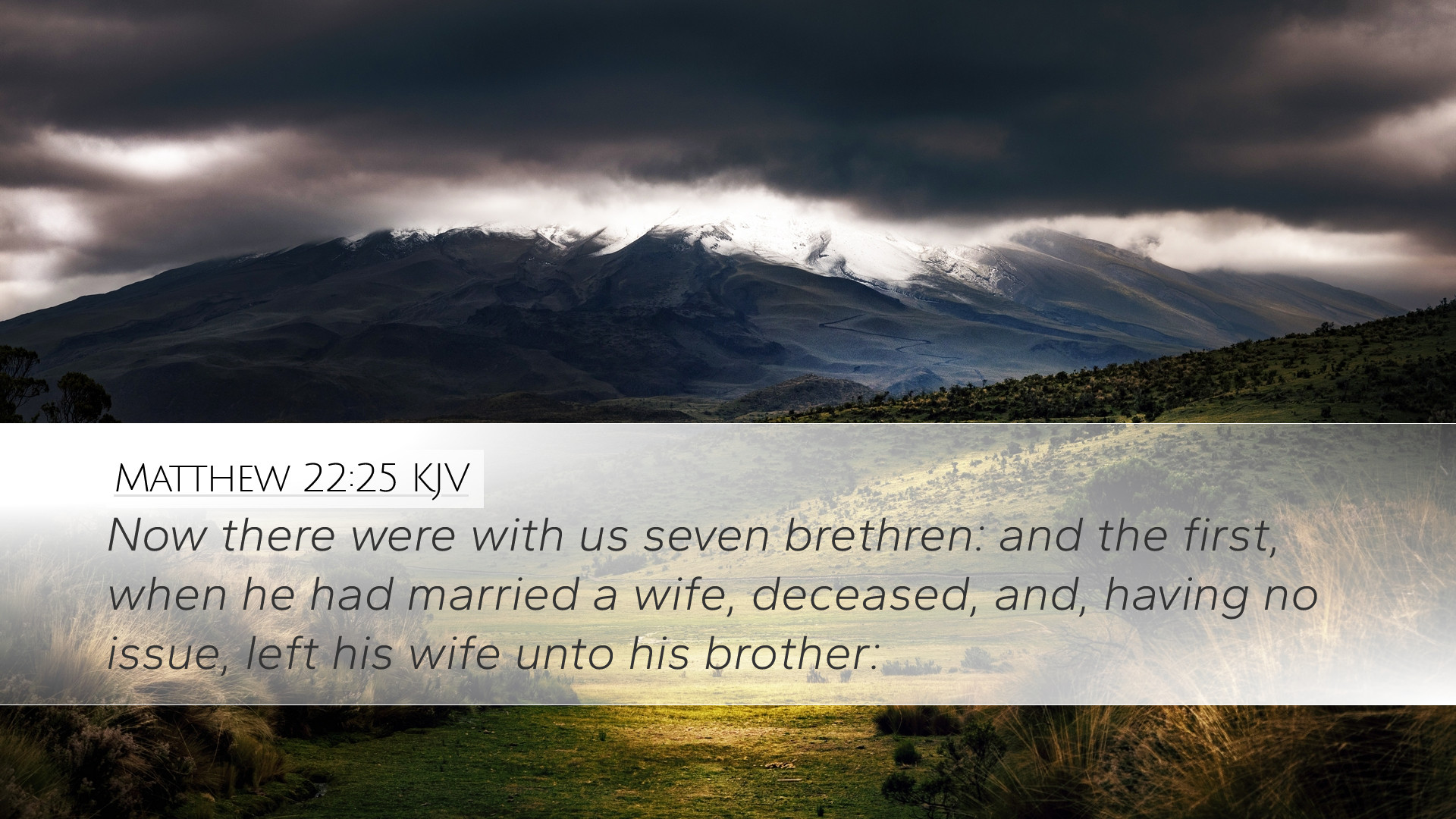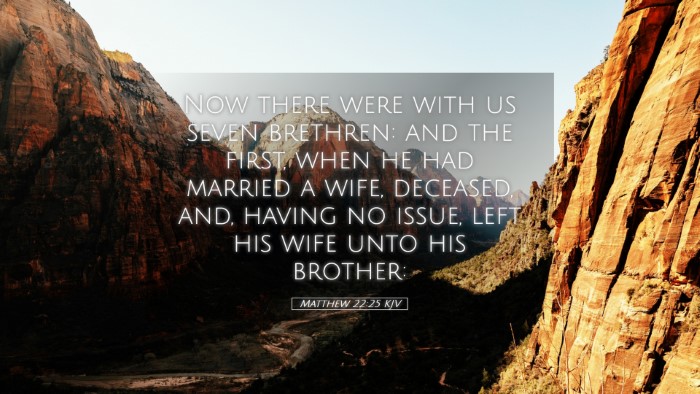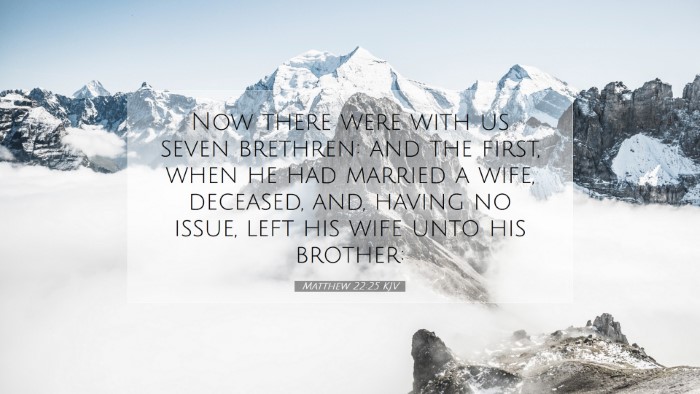Commentary on Matthew 22:25
Matthew 22:25 presents a scenario that engages deeply with cultural and theological themes of marriage, resurrection, and the afterlife. The verse states:
"Now there were with us seven brethren: and the first, when he had married a wife, deceased, and having no issue, left his wife unto his brother."
Contextual Background
This verse is situated in the context of a confrontation between Jesus and the Sadducees, a sect known for denying the resurrection of the dead. The Sadducees attempt to discredit Jesus by presenting a hypothetical scenario involving levirate marriage, which is a practice derived from the Mosaic Law wherein a man marries his deceased brother's widow to preserve the family line (Deuteronomy 25:5-10).
Insights from Commentators
-
Matthew Henry:
Matthew Henry emphasizes the absurdity in the Sadducees' argument, suggesting that they failed to understand the nature of God and His power in the resurrection. He highlights that the Sadducees used a real law but twisted its application to mock the resurrection, indicating their lack of faith in God's ultimate power to restore and redefine life after death.
-
Albert Barnes:
Barnes provides a detailed exposition on the Sadducees and their misunderstanding of scripture. He notes that their hypothetical situation is constructed to highlight their belief that resurrection would create complications that would render marriage unnecessary. He points out that their question reveals a misunderstanding of both the nature of the afterlife and the character of God, who is not bound by human institutions.
-
Adam Clarke:
Clarke comments on the cultural practice of levirate marriage and its significance in Israelite society. He elaborates on how such customs were designed to ensure family continuity and inheritance. Clarke argues that the Sadducees' scenario, while rooted in a legitimate practice, fails to acknowledge the transformative nature of the resurrection, where earthly relationships will not hold the same significance as they do in the temporal realm.
Theological Implications
This verse invites readers to reflect on the nature of resurrection, challenging the limits of human understanding. The Sadducees' question serves as a springboard for Jesus to reveal a higher truth about life after death.
Understanding Resurrected Life
As per the insights provided by the commentators, the message conveyed through this verse indicates that relationships in the afterlife transcend earthly constructs. The notion that marriage is a permanent condition in eternity is refuted by the resurrection's reality, where the redeemed will exist in a glorified state, similar to angels, free from the bindings of earthly life.
Exploring the Nature of God
The encounter highlights the Sadducees' ignorance of God's nature. For instance, as Barnes notes, understanding that God is the God of the living, not the dead, reinforces the belief that resurrection is an integral aspect of divine promise.
Practical Applications for Readers
For pastors, students, theologians, and Bible scholars, it is essential to take away several practical applications from this verse:
- Witnessing God’s Power: The power of God to resurrect and transform life invites believers to live with hope and assurance of eternal life.
- Understanding Cultural Context: Awareness of cultural practices, like levirate marriages, enriches our understanding of biblical narratives and Jewish customs.
- Clarifying Misconceptions: Engaging with common misconceptions about Scripture encourages deeper theological inquiry and clarifies doctrine regarding resurrection and eternal life.
- Encouraging Spiritual Growth: Emphasizing the affirmation of God’s transformative nature should inspire believers to pursue spiritual growth and renewal.
Conclusion
In summary, Matthew 22:25 serves as a profound reminder of the limitations of human perspective in understanding divine truths. By bringing to light the error in the Sadducees’ reasoning, Jesus affirms both the reality of the resurrection and the overarching sovereignty of God. This content has insights for all readers, urging them towards a deeper exploration of faith and an appreciation for the promises inherent in the resurrection narrative.


